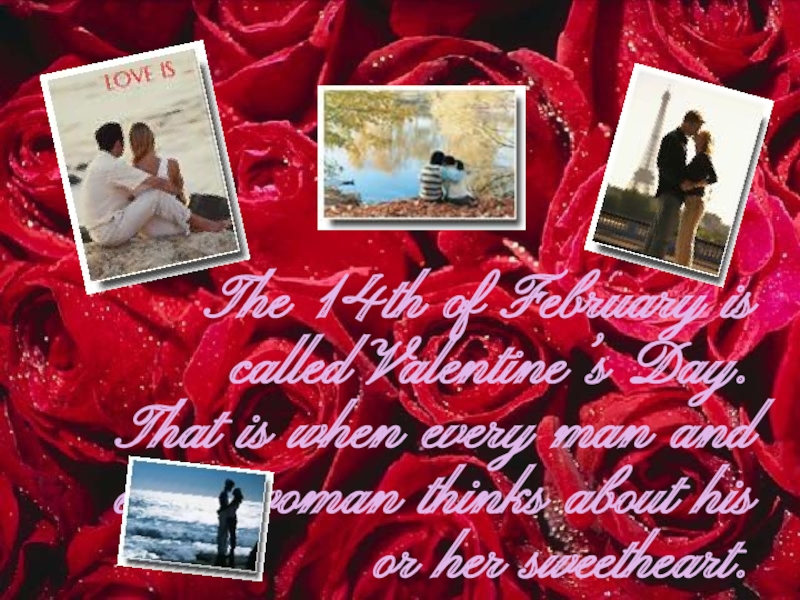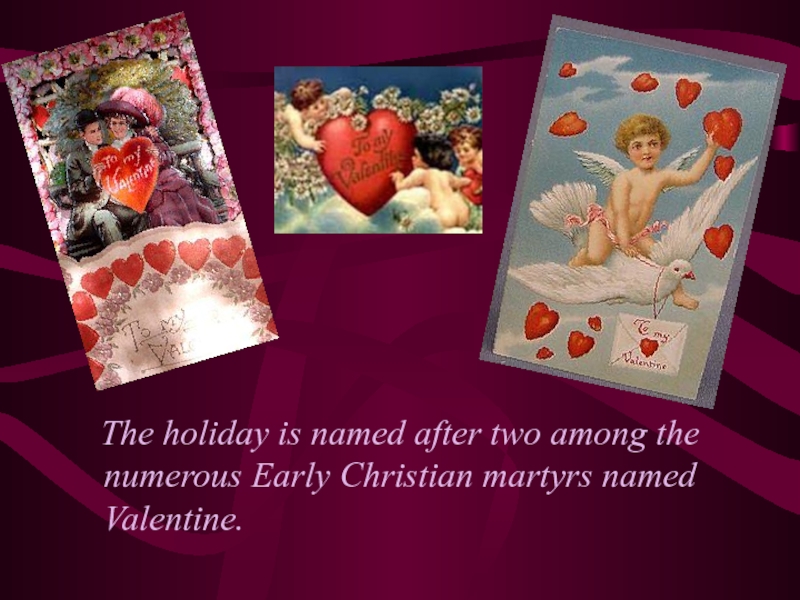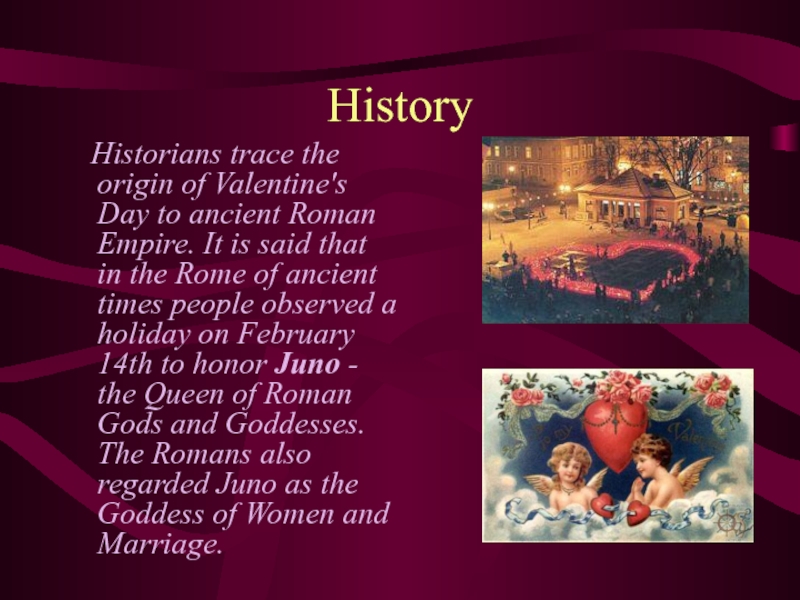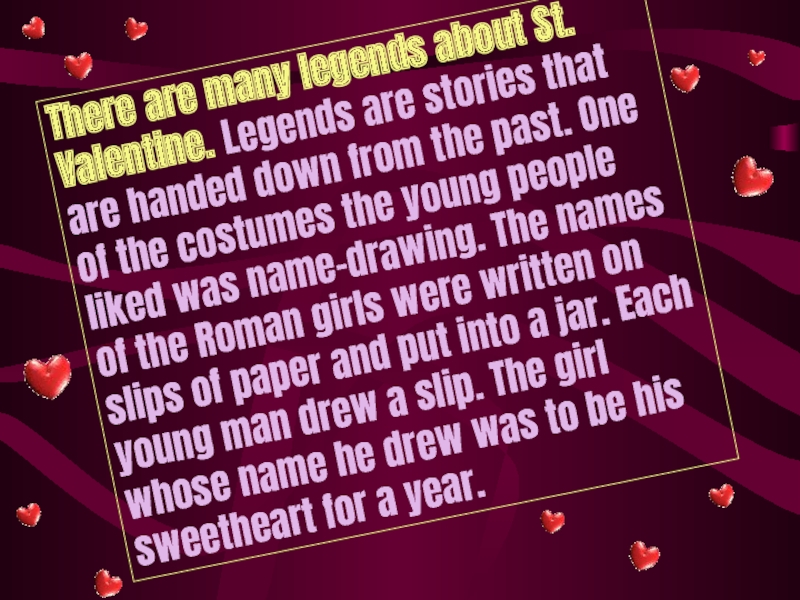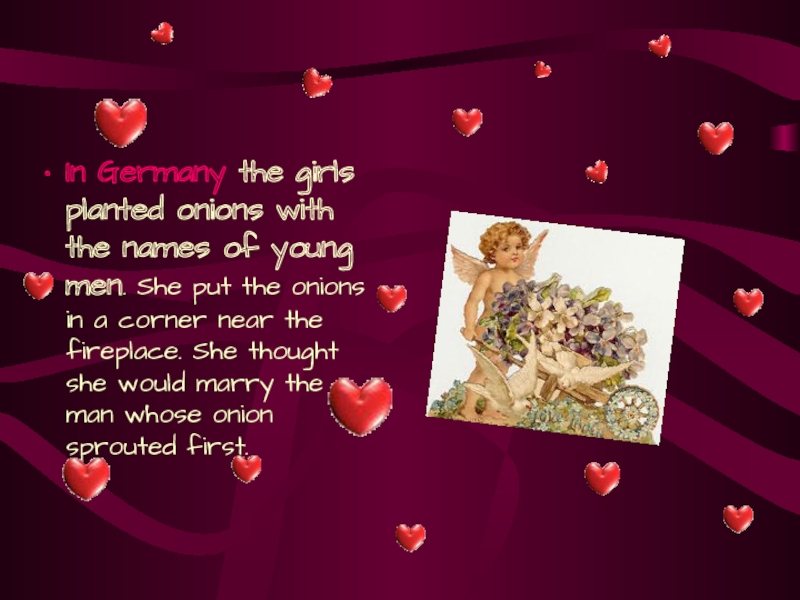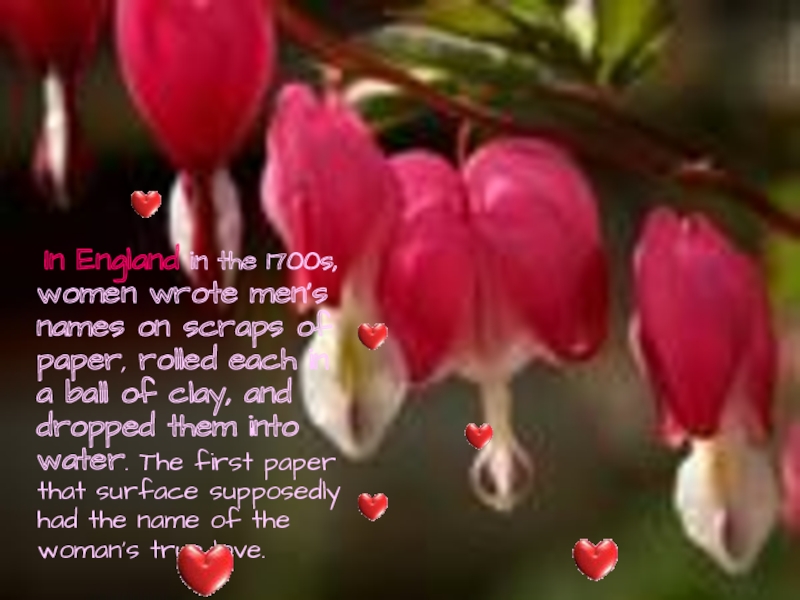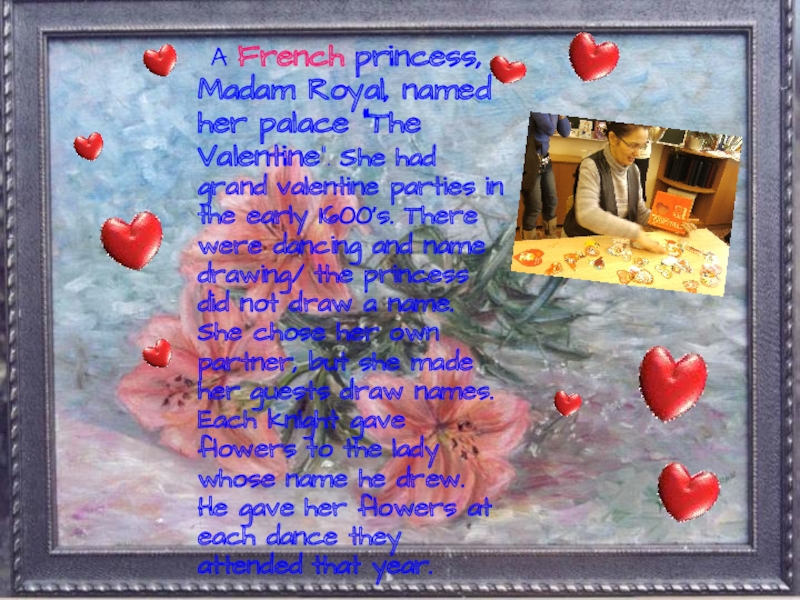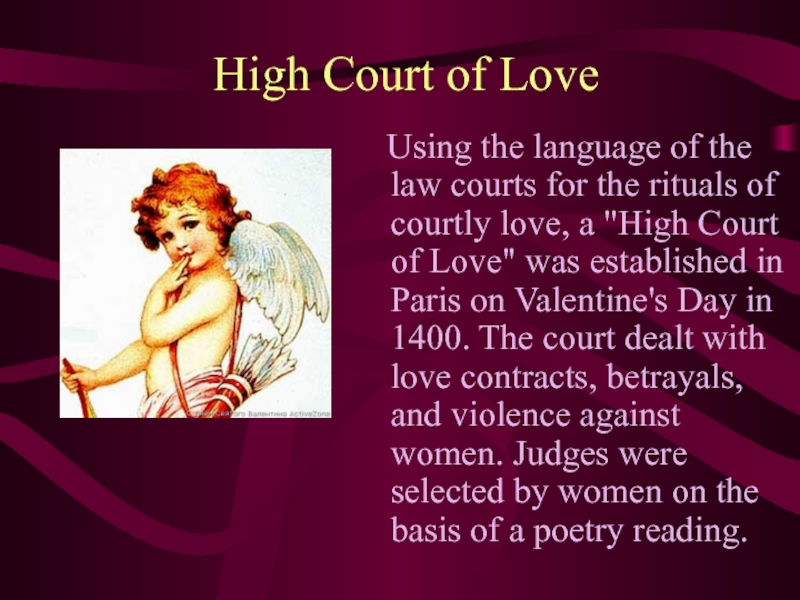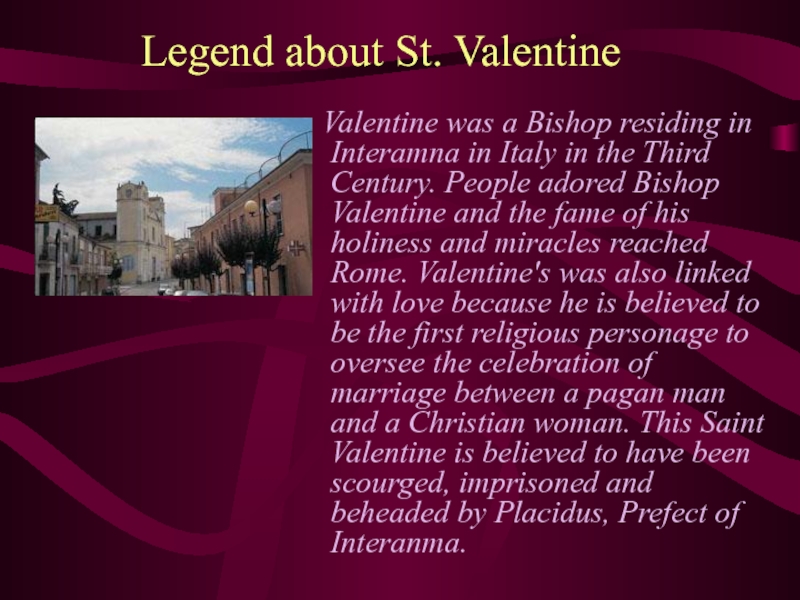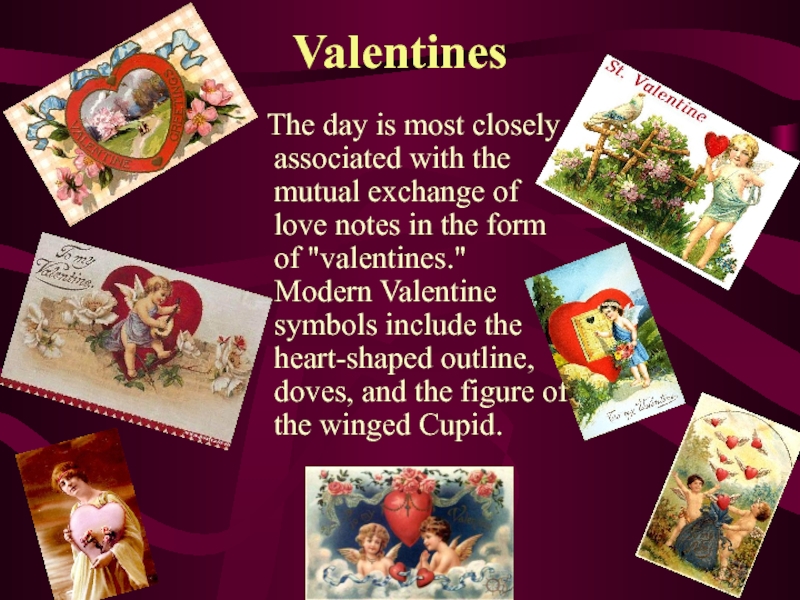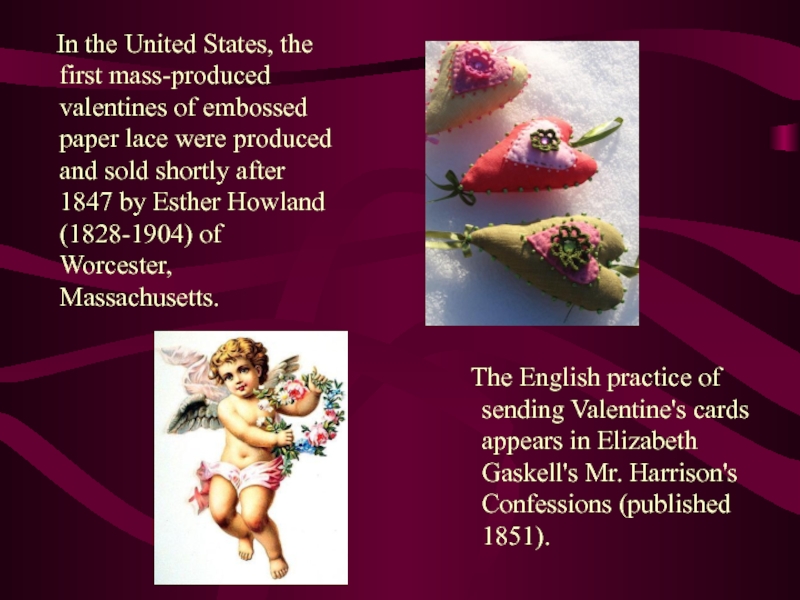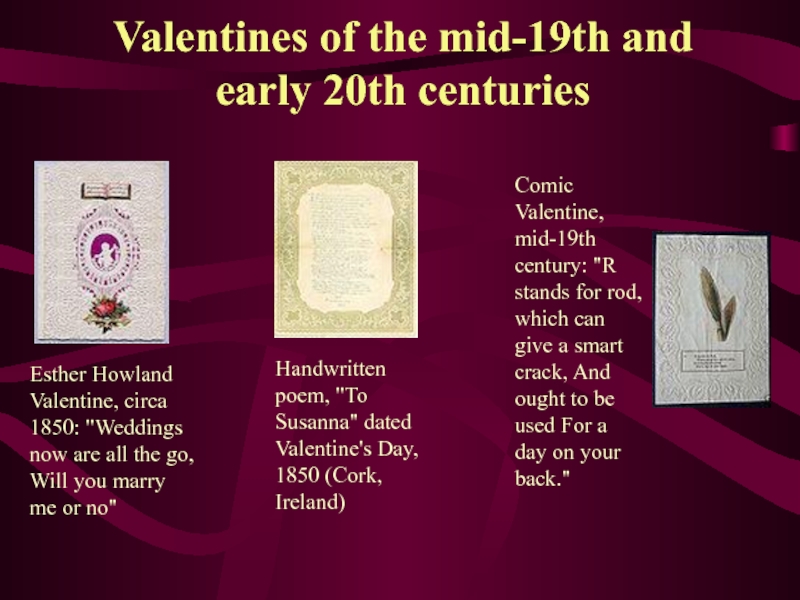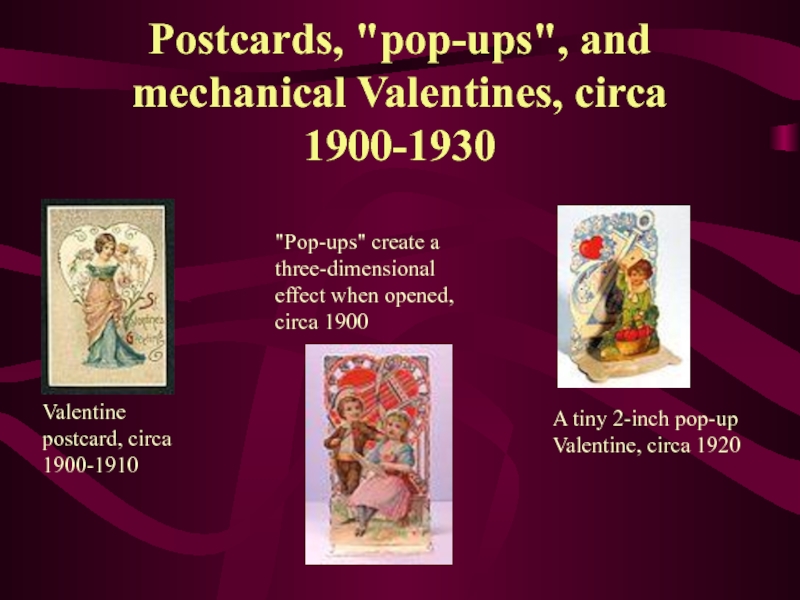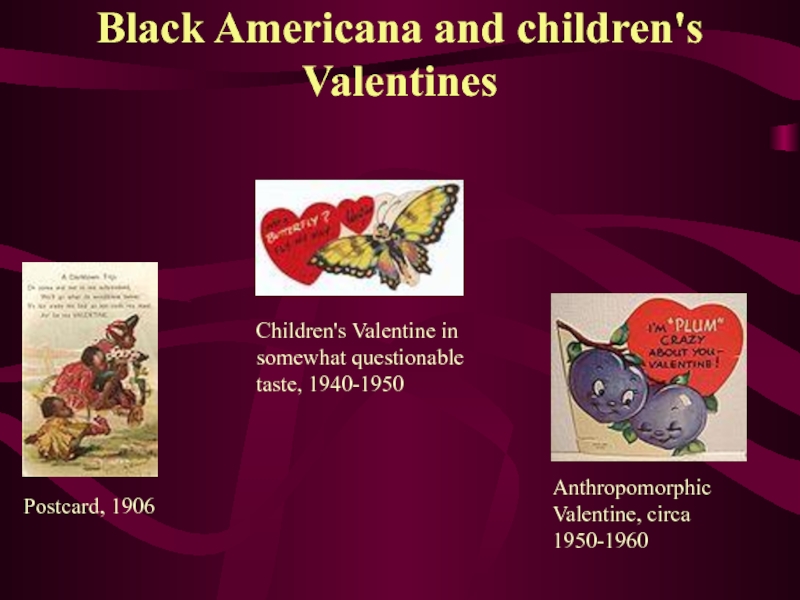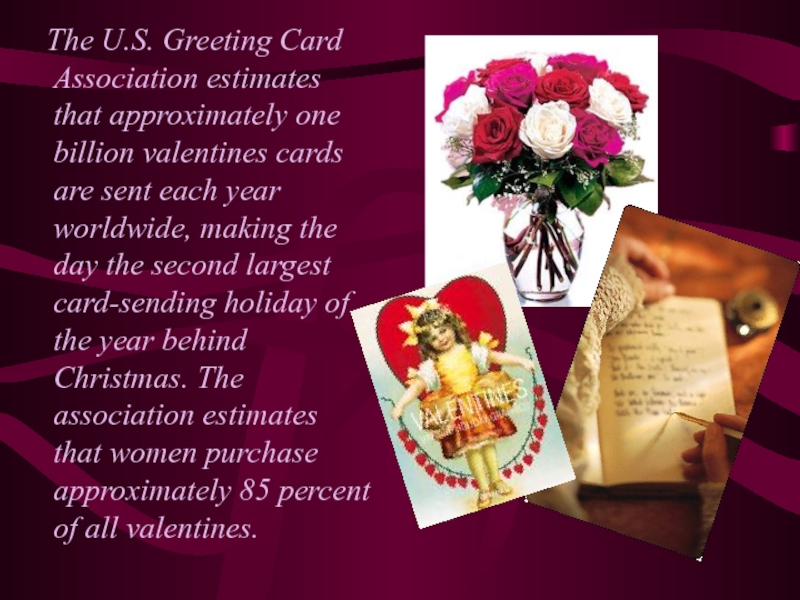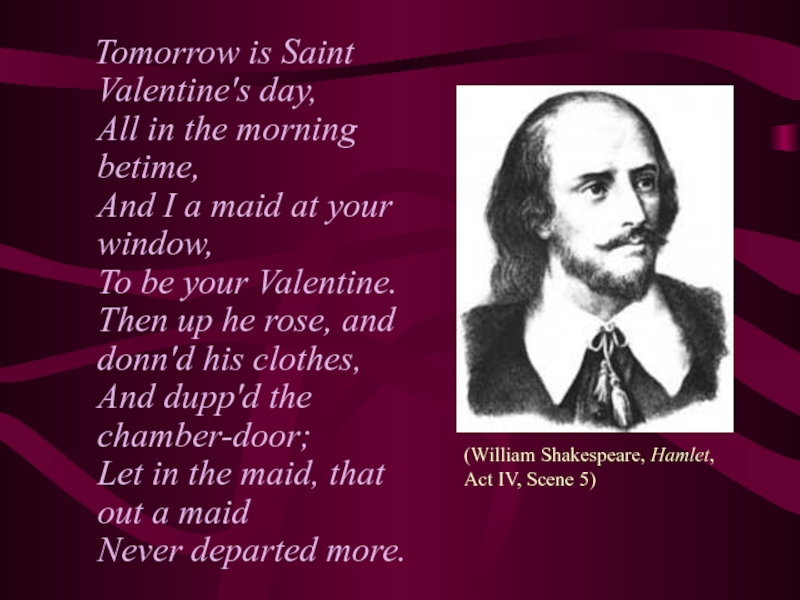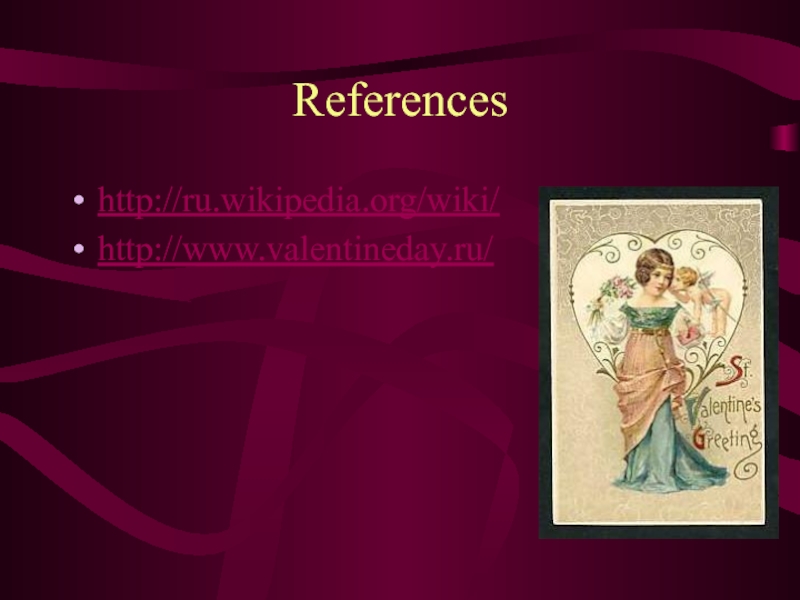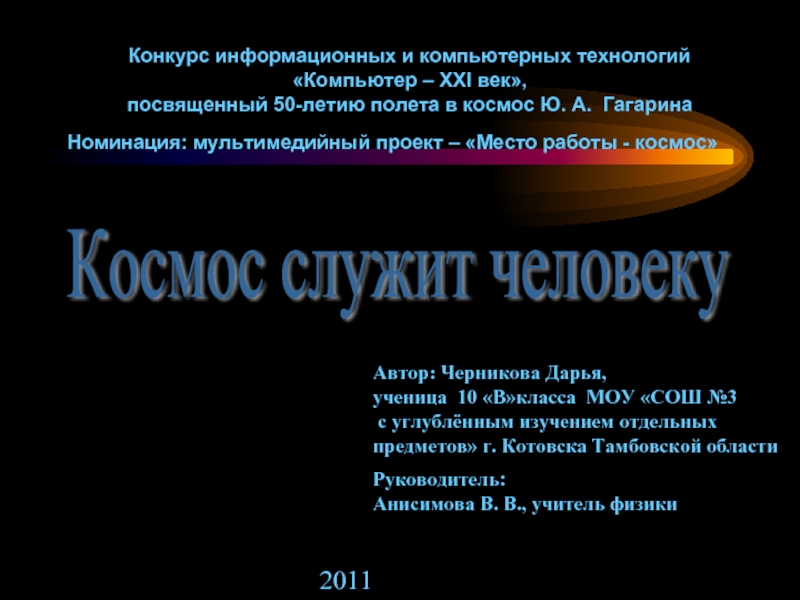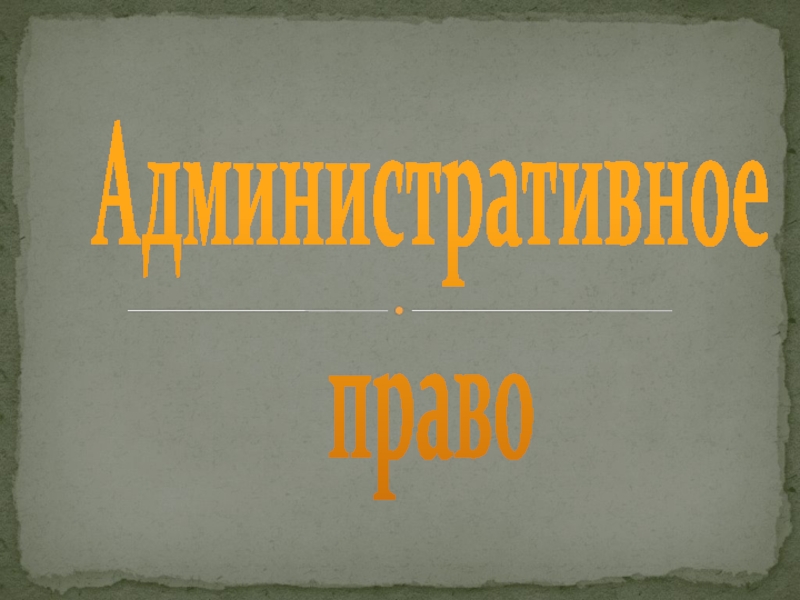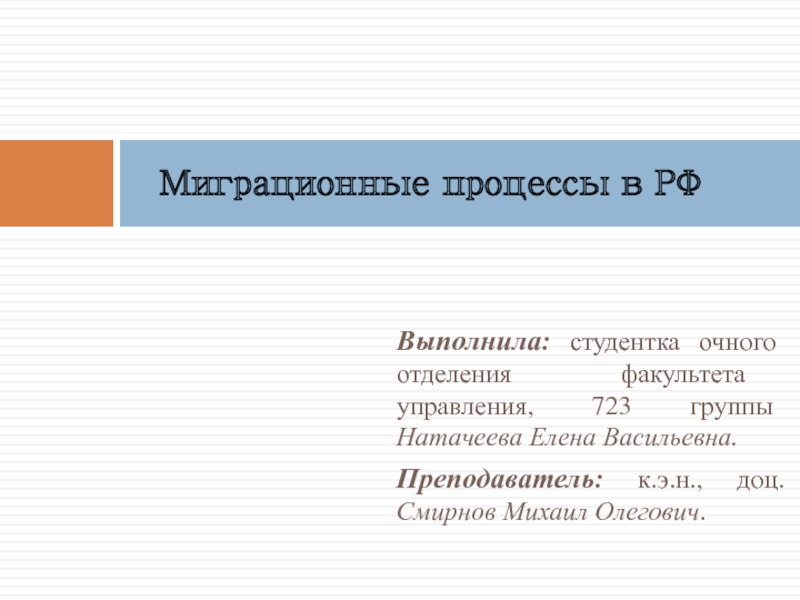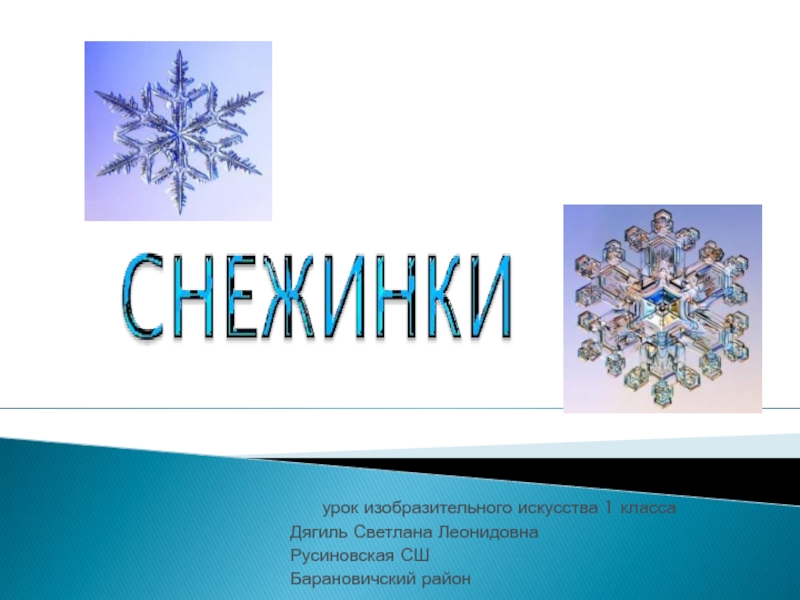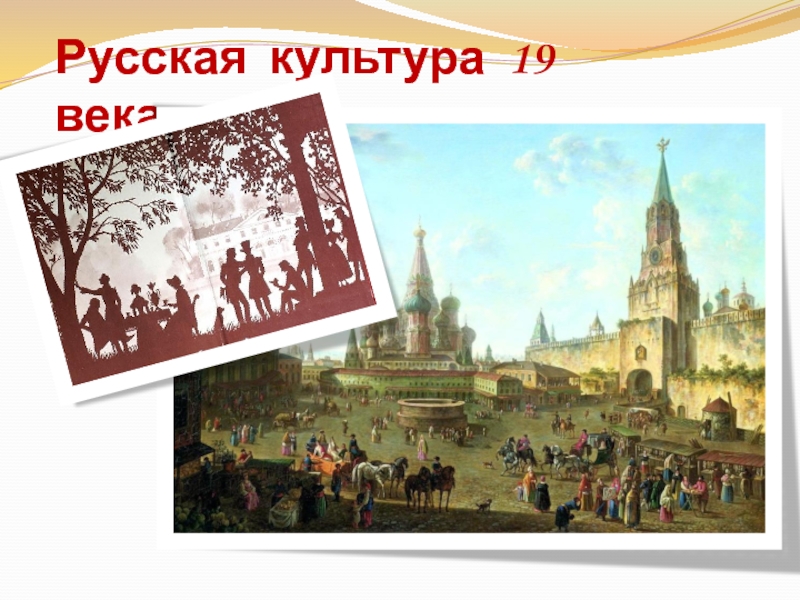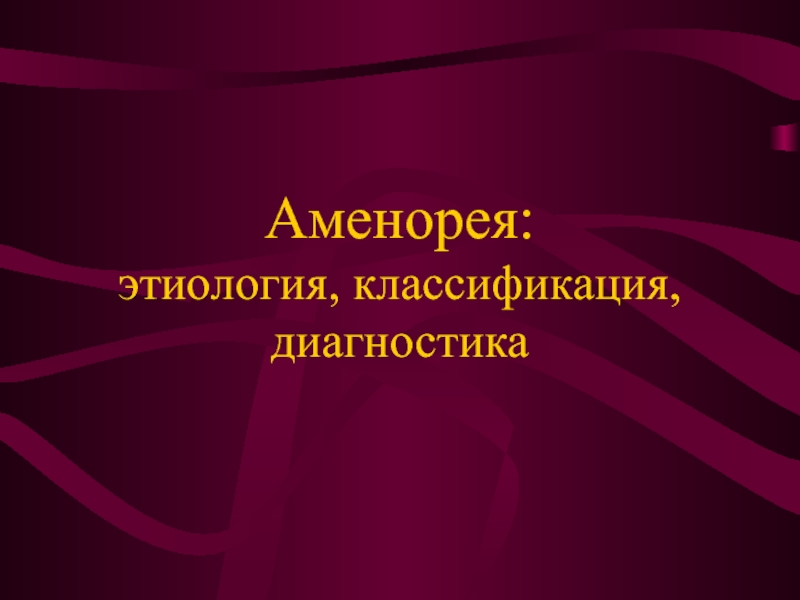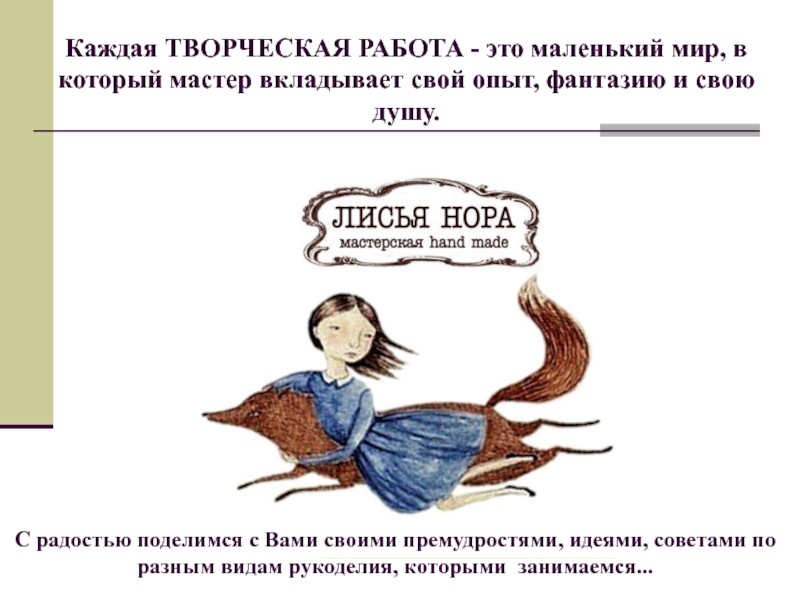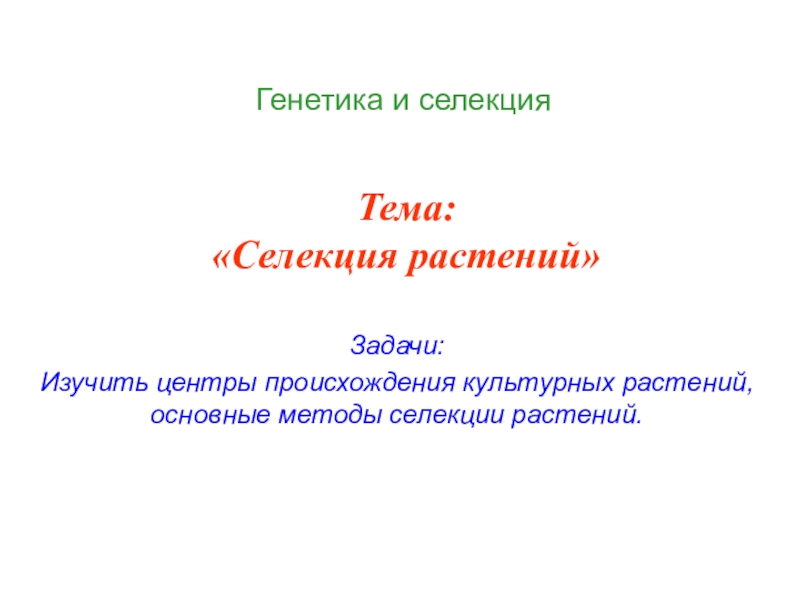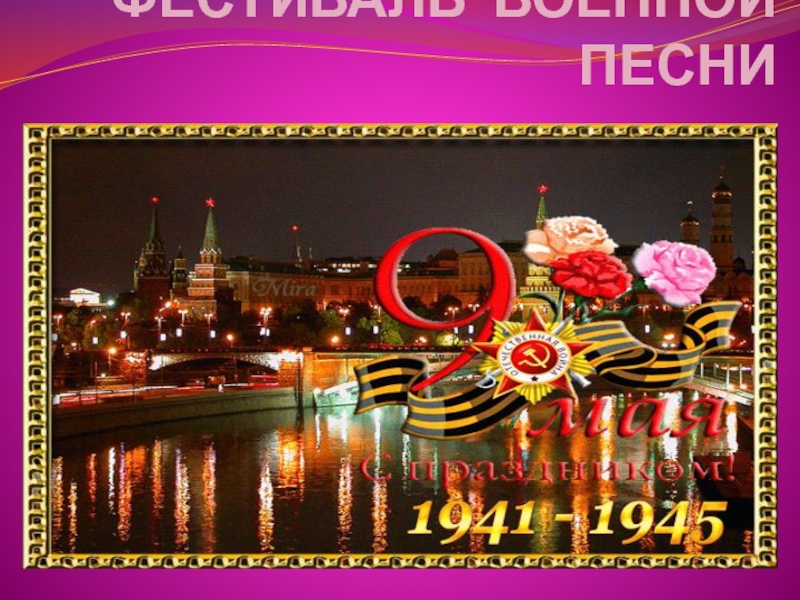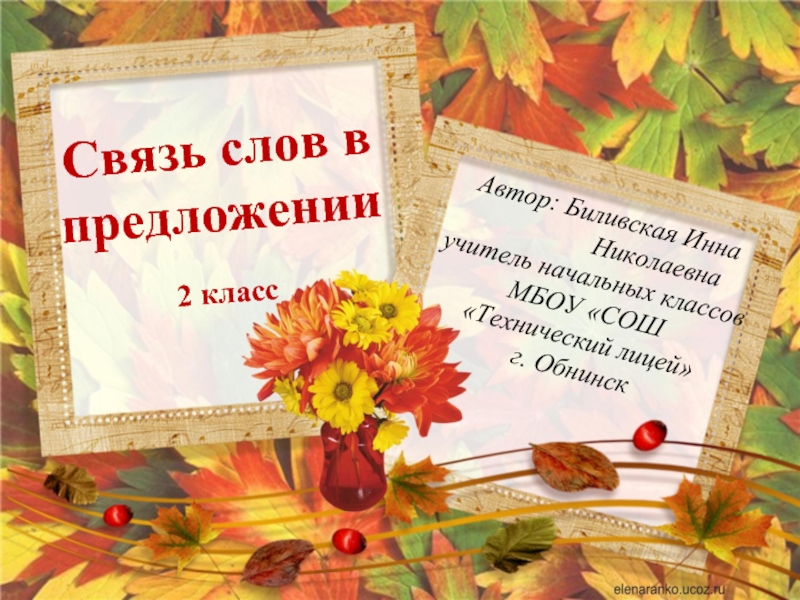Разделы презентаций
- Разное
- Английский язык
- Астрономия
- Алгебра
- Биология
- География
- Геометрия
- Детские презентации
- Информатика
- История
- Литература
- Математика
- Медицина
- Менеджмент
- Музыка
- МХК
- Немецкий язык
- ОБЖ
- Обществознание
- Окружающий мир
- Педагогика
- Русский язык
- Технология
- Физика
- Философия
- Химия
- Шаблоны, картинки для презентаций
- Экология
- Экономика
- Юриспруденция
Valentine’s Day
Содержание
- 1. Valentine’s Day
- 2. The 14th of February is called Valentine’s
- 3. The holiday is named after
- 4. History Historians trace the origin of
- 5. There are many legends about St. Valentine.
- 6. Traditions In Italy young girl would
- 7. In Germany the girls planted onions with
- 8. In England in the 1700s,
- 9. A French princess, Madam Royal,
- 10. High Court of Love Using the
- 11. Legend about St. Valentine Valentine was
- 12. The day is most closely
- 13. In the United States, the
- 14. Valentines of the mid-19th and early 20th
- 15. Postcards, "pop-ups", and mechanical Valentines, circa 1900-1930
- 16. Black Americana and children's Valentines Postcard, 1906
- 17. The U.S. Greeting Card Association
- 18. Tomorrow is Saint Valentine's day,
- 19. Referenceshttp://ru.wikipedia.org/wiki/http://www.valentineday.ru/
- 20. Скачать презентанцию
Слайды и текст этой презентации
Слайд 4History
Historians trace the origin of Valentine's Day to
ancient Roman Empire. It is said that in the Rome
of ancient times people observed a holiday on February 14th to honor Juno - the Queen of Roman Gods and Goddesses. The Romans also regarded Juno as the Goddess of Women and Marriage.Слайд 5There are many legends about St. Valentine. Legends are stories
that are handed down from the past. One of the
costumes the young people liked was name-drawing. The names of the Roman girls were written on slips of paper and put into a jar. Each young man drew a slip. The girl whose name he drew was to be his sweetheart for a year.Слайд 6Traditions
In Italy young girl would stand at her
window for half an hour before sunrise. If no one
went by, she believed she would not be marred that year. If she saw a men pass, she thought she would marry him or someone who looked like him.Слайд 7In Germany the girls planted onions with the names of
young men. She put the onions in a corner near
the fireplace. She thought she would marry the man whose onion sprouted first.Слайд 8 In England in the 1700s, women wrote men’s
names on scraps of paper, rolled each in a ball
of clay, and dropped them into water. The first paper that surface supposedly had the name of the woman’s true love.Слайд 9 A French princess, Madam Royal, named her palace
”The Valentine”. She had grand valentine parties in the early
1600’s. There were dancing and name drawing/ the princess did not draw a name. She chose her own partner, but she made her guests draw names. Each knight gave flowers to the lady whose name he drew. He gave her flowers at each dance they attended that year.Слайд 10High Court of Love
Using the language of the
law courts for the rituals of courtly love, a "High
Court of Love" was established in Paris on Valentine's Day in 1400. The court dealt with love contracts, betrayals, and violence against women. Judges were selected by women on the basis of a poetry reading.Слайд 11Legend about St. Valentine
Valentine was a Bishop residing
in Interamna in Italy in the Third Century. People adored
Bishop Valentine and the fame of his holiness and miracles reached Rome. Valentine's was also linked with love because he is believed to be the first religious personage to oversee the celebration of marriage between a pagan man and a Christian woman. This Saint Valentine is believed to have been scourged, imprisoned and beheaded by Placidus, Prefect of Interanma.Слайд 12 The day is most closely associated with the
mutual exchange of love notes in the form of "valentines."
Modern Valentine symbols include the heart-shaped outline, doves, and the figure of the winged Cupid.Valentines
Слайд 13 In the United States, the first mass-produced valentines
of embossed paper lace were produced and sold shortly after
1847 by Esther Howland (1828-1904) of Worcester, Massachusetts. The English practice of sending Valentine's cards appears in Elizabeth Gaskell's Mr. Harrison's Confessions (published 1851).
Слайд 14Valentines of the mid-19th and early 20th centuries
Esther Howland Valentine,
circa 1850: "Weddings now are all the go, Will you
marry me or no"Handwritten poem, "To Susanna" dated Valentine's Day, 1850 (Cork, Ireland)
Comic Valentine, mid-19th century: "R stands for rod, which can give a smart crack, And ought to be used For a day on your back."
Слайд 15Postcards, "pop-ups", and mechanical Valentines, circa 1900-1930
Valentine postcard, circa 1900-1910
"Pop-ups" create a three-dimensional effect when opened, circa 1900
A
tiny 2-inch pop-up Valentine, circa 1920 Слайд 16Black Americana and children's Valentines
Postcard, 1906
Children's Valentine in somewhat
questionable taste, 1940-1950
Anthropomorphic Valentine, circa 1950-1960
Слайд 17 The U.S. Greeting Card Association estimates that approximately
one billion valentines cards are sent each year worldwide, making
the day the second largest card-sending holiday of the year behind Christmas. The association estimates that women purchase approximately 85 percent of all valentines.Слайд 18 Tomorrow is Saint Valentine's day, All in the morning
betime, And I a maid at your window, To be your Valentine. Then
up he rose, and donn'd his clothes, And dupp'd the chamber-door; Let in the maid, that out a maid Never departed more.(William Shakespeare, Hamlet, Act IV, Scene 5)

